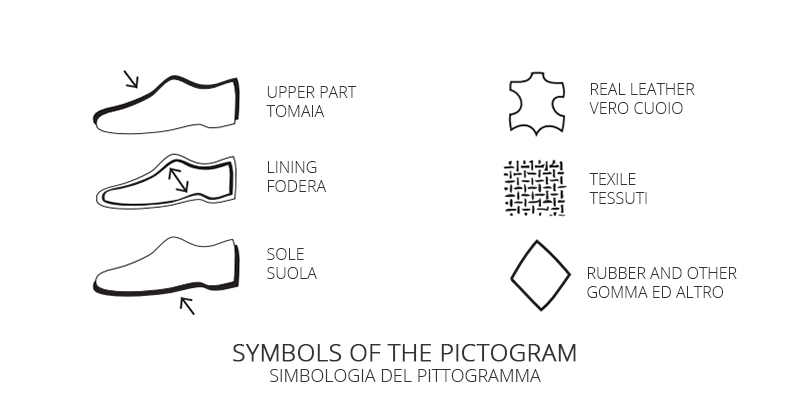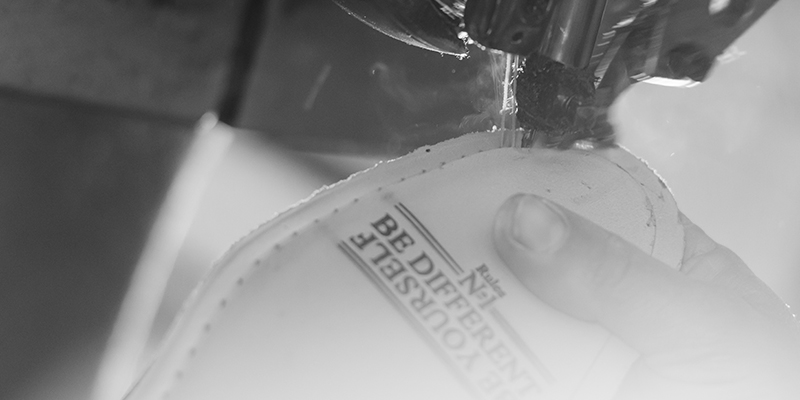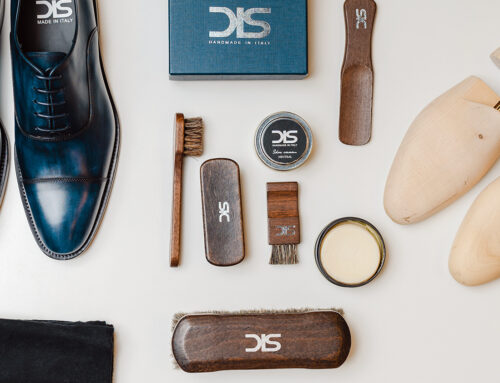Why you should buy Made in Italy shoes
Why is the “Made in Italy” seal is synonym of quality and style? Discover the real value behind handcrafted Made in Italy shoes.
The “Made in Italy” seal indicates the Country of origin of a specific product. About from the Eighties onwards, the Made in Italy seal was an English wording by Italian producers. They used it to avoid the falsification of products in four key sectors: Food, Clothing, Cars and Furniture. All Made in Italy products were considered of particular value because they were made with top quality raw materials, en extreme attention to details and they were characterized by unmistakable style. In a few words, the word “Made in Italy” was used to give security to buyers.
But let’s talk specifically about shoes Made in Italy. The most famous “Made in Italy” footwear district in the World was born in the Marche region. The origins of the district date back to the fifteenth century, but it is only in the first decades of the nineteenth century that we can speak of a real footwear pole, led by Sant’Elpidio a Mare, Montegranaro, Monte Urano and Monte San Giusto towns. In the post-war period, shoe factories in that area became industrial production, while maintaining the high quality standards typical of hand craftsmanship. The art of master craftsmen and the passion for classic shoes have been handed down from generation to generation until today.

DIS – Design Italian Shoes – was born right in Marche footwear district and employs the best local craftsmen to create top quality custom italian leather shoes, all strictly sealed by the “Made in Italy” tag. Handcrafting italian shoes for men and more specifically custom shoes, it’s a very complex process: just think to the fact that more than 220 steps are required to make one pair of italian shoes, your own and unique shoe!
Thanks to the touch of the local master craftsmen DIS creates shoes which encapsulate tradition, knowledge, innovation, comfort and beauty: premium quality products, designed to last, without waste. In fact, DIS believes in the revolutionary power of Made-To-Order to handcraft only as much as it’s needed and what’s needed, refusing to offer products according to latest trends. Trends changes quickly and it’s no surprise that customers throw away goods only after few wears and companies throw away products as well because they were unable to sell them. That is the biggest problem caused by fast fashion that already has a huge environmental cost.
How to recognize handmade italian shoes?
Four tips for you:
1- Check materials and leathers
The first step in understanding what kind of materials have been used: real leather shoes will be soft to the touch. Handmade shoes do not have an internal labels, but their composition will be written on the box or on the removable tag on the sole. It is impossible to find flawless leather. Real leathers have small natural imperfections and they are extremely breathable. To check how breathable they are, try pass a slightly wet sponge on it: if after a few seconds the leather is still wet you made a good purchase!
The most valued shoe leather is first grain leather, also called a half grain or full grain. How to recognize a first grain leather? It’s simple: it should have pores! Visit the DIS website to see all our leathers.

2- Check symmetry and comfort:
The two shoes must be symmetrical, there must be no significant color differences or the height of the heel. Plus, trying on the shoe is key: a cheap classic leather shoe if not comfortable can lead to posture problems. At DIS we ship in EU – free-of-charge – some try-on samples, so customers can try the shoes and check quality and fit. Learn more about DIS free try-on samples delivery.
3- Check the pictogram
Handmade shoes do not have an internal label, but all the characteristics of their composition will be legible on the box or on the pictogram on the bottom. On every pair of DIS shoes there is a label that provides information on the materials used to make them. But what do these symbols mean? Let’s see together how to read the pictogram symbols.
Basically the symbols are divided in two main groups: Shoe Parts and Material Types. For every shoe parts, the pictogram tells the material used.
Shoe parts:
Upper: this symbol indicates the outer face of the top part of the shoe which is attached to the outer sole.
Lining and Sock: this symbol indicates the lining of the upper, and the insole, which make up the inside of the shoe.
Outer sole: this symbol indicates the bottom part of the shoe which is attached to the upper.
Materials:
Leather: the symbol that indicates that the part is entirely made of leather.
Coated leather: it means that the leather has a 0.15mm coating made of cardboard, fabric or rubber.
Textile or Synthetics: this means that the part is made by natural textile and synthetic or non-woven textile materials, with at least 80% by weight of textile fibres.
Other materials: if this symbol is present, the shoe part contains other materials such as cork, polymers or rubbers.

To better understand these symbols, let’s take an example: this is the pictogram applied to all DIS shoe boxes and that it is also glued to each and every shoe sole.

In reference to what has been said, we can read it this way:
- this shoe has a leather upper;
- the lining of the upper and the insole are made of leather;
- this shoes has a leather outer sole;
- furthermore, the “Made in Italy” tag highlights that all materials used are Italian and that the production takes place in Italy;
Simple isn’t it? By learning the meaning of these symbols, you can never go wrong when buying a shoe.
4- Check the stitching
The stitching of the bottom to the upper must be perfect. In fine handmade shoes, the sole is stitched. DIS uses Blake and Blake Rapid stitches, giving the shoe resistance over time and flexibility.

So pay attention to the fake Made in Italy shoes: look for the Made in Italy seal and DIStinguish yourself!

